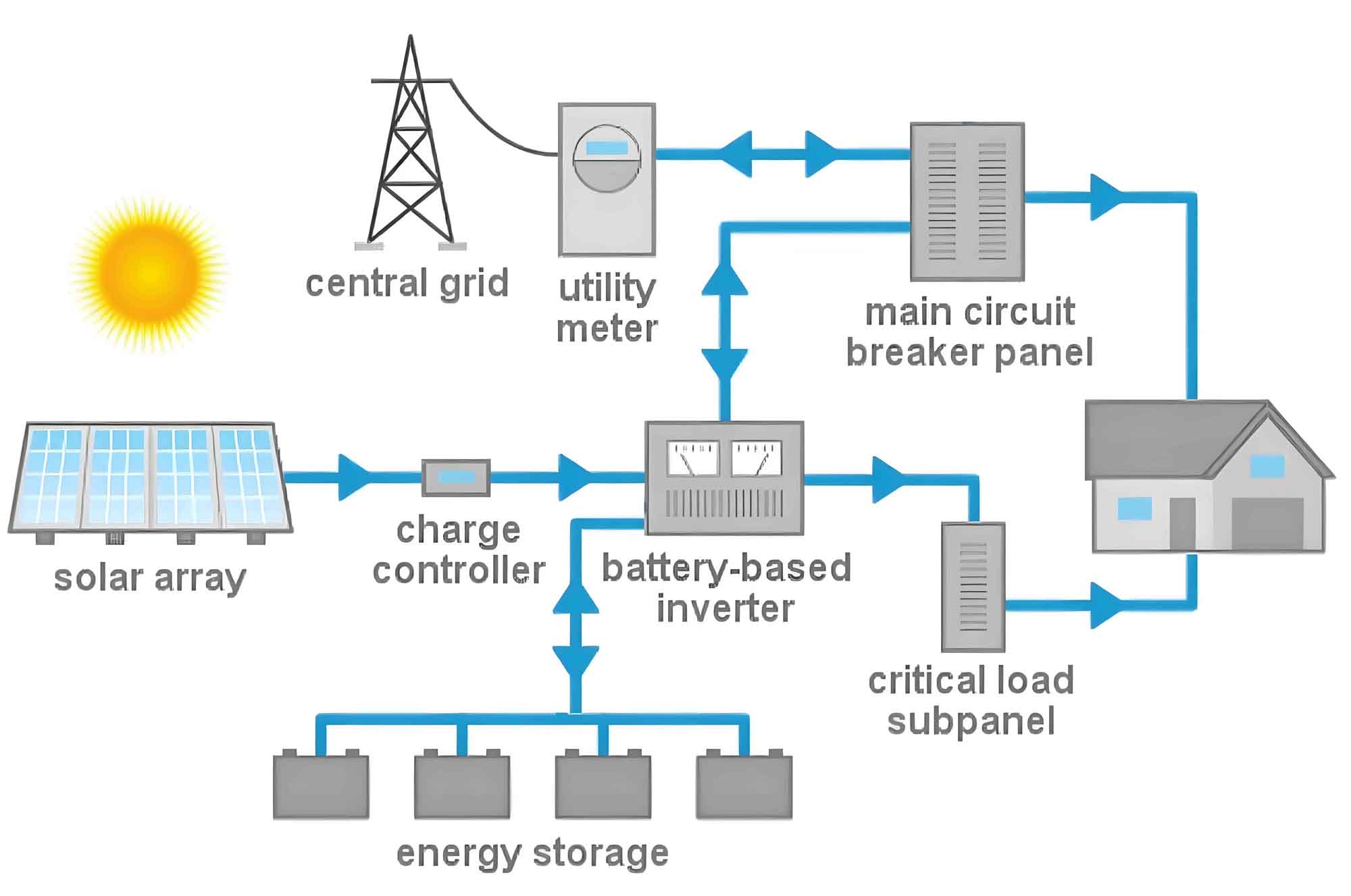As the demand for renewable energy sources grows, advancements in solar panel technology are revolutionizing home solar energy systems. Next-generation solar panels are more efficient, durable, and aesthetically pleasing, making them an attractive option for homeowners. This article explores the latest innovations in solar panel technology and how they are driving the adoption of home solar energy systems.

High-Efficiency Solar Panels
Monocrystalline Solar Panels
Monocrystalline solar panels are known for their high efficiency and sleek appearance. Made from single-crystal silicon, these panels offer several advantages:
- Higher Efficiency: Monocrystalline solar panels typically have an efficiency rate of 15-20%, making them one of the most efficient types available.
- Space Efficiency: Due to their higher efficiency, fewer panels are needed to generate the same amount of electricity, making them ideal for homes with limited roof space.
- Longevity: These panels have a longer lifespan, often coming with warranties of 25-30 years.
Table 1: Comparison of Solar Panel Types
| Solar Panel Type | Efficiency (%) | Lifespan (Years) | Cost per Watt ($) |
|---|---|---|---|
| Monocrystalline | 15-20 | 25-30 | 0.80-1.50 |
| Polycrystalline | 13-16 | 20-25 | 0.70-1.00 |
| Thin-Film | 10-12 | 10-20 | 0.50-0.80 |
Bifacial Solar Panels
Bifacial solar panels can capture sunlight from both sides, increasing the total energy generated. These panels are particularly effective in environments with high albedo surfaces, such as snow or white rooftops, which reflect additional sunlight onto the back of the panels.
- Increased Energy Yield: Bifacial solar panels can produce up to 30% more electricity than traditional monofacial panels.
- Durability: These panels are often more durable due to their robust construction.
List of Benefits of Bifacial Solar Panels:
- Higher energy production
- Enhanced durability
- Better performance in reflective environments
Advanced Materials and Coatings
Perovskite Solar Cells
Perovskite solar cells are an emerging technology that promises to significantly boost the efficiency of solar panels. Made from a class of materials with a specific crystal structure, perovskite solar cells offer several advantages:
- High Efficiency: Perovskite solar cells have achieved efficiency rates of over 25% in laboratory settings.
- Low Production Costs: The materials used in perovskite solar cells are cheaper and more abundant than those used in traditional silicon-based solar panels.
- Flexibility: These solar cells can be manufactured on flexible substrates, allowing for innovative applications such as solar panels integrated into building materials.
Anti-Reflective Coatings
Anti-reflective coatings are applied to solar panels to minimize the reflection of sunlight, ensuring that more light is absorbed and converted into electricity. These coatings can improve the overall efficiency of solar panels by up to 5%.
Table 2: Impact of Anti-Reflective Coatings on Solar Panel Efficiency
| Without Coating | With Coating |
|---|---|
| 15% Reflection | 2-5% Reflection |
| 85% Absorption | 95-98% Absorption |
List of Benefits of Advanced Coatings:
- Increased light absorption
- Improved overall efficiency
- Enhanced durability
Integration with Smart Home Technology
Smart Inverters
Smart inverters are essential components of next-generation home solar energy systems. These devices convert the DC electricity generated by solar panels into AC electricity for home use. Smart inverters offer several advanced features:
- Real-Time Monitoring: Homeowners can monitor the performance of their home solar energy systems in real-time, allowing for immediate detection and resolution of issues.
- Grid Interaction: Smart inverters can interact with the electrical grid, optimizing energy usage and facilitating net metering.
- Battery Storage Integration: These inverters are compatible with battery storage systems, allowing homeowners to store excess energy for use during peak times or power outages.
Energy Management Systems
Energy management systems integrate home solar energy systems with smart home technology, providing homeowners with greater control over their energy consumption. Features include:
- Automated Energy Use: These systems can automatically adjust energy usage based on the availability of solar power, reducing reliance on grid electricity.
- Peak Shaving: By storing excess energy and using it during peak demand periods, homeowners can minimize their electricity costs.
- Energy Usage Insights: Detailed insights into energy consumption patterns help homeowners make informed decisions about energy use and efficiency improvements.
List of Smart Home Integration Features:
- Real-time system monitoring
- Automated energy management
- Detailed energy usage insights
- Grid interaction and net metering
Aesthetic Innovations
Building-Integrated Photovoltaics (BIPV)
Building-integrated photovoltaics (BIPV) seamlessly integrate solar panels into the architecture of a home, providing an aesthetically pleasing alternative to traditional solar panels. BIPV products include solar shingles, solar windows, and solar facades.
- Aesthetic Appeal: BIPV systems blend with the building’s design, enhancing its aesthetic appeal.
- Dual Functionality: These systems serve both as building materials and energy generators, reducing overall material costs.
Transparent Solar Panels
Transparent solar panels are an innovative technology that allows light to pass through while still generating electricity. These panels can be used in windows, skylights, and other architectural elements.
- Enhanced Design Flexibility: Transparent solar panels can be integrated into various parts of a building without compromising aesthetics.
- Additional Applications: These panels open up new possibilities for solar energy generation in areas where traditional panels are not feasible.
Table 3: Aesthetic Solar Panel Innovations
| Innovation Type | Description | Application |
|---|---|---|
| Building-Integrated Photovoltaics (BIPV) | Solar panels integrated into building materials | Solar shingles, windows, facades |
| Transparent Solar Panels | Solar panels that allow light to pass through | Windows, skylights |
Conclusion
Next-generation solar panels are driving significant advancements in home solar energy systems. Innovations in high-efficiency solar panels, advanced materials and coatings, smart home integration, and aesthetic design are making solar energy more accessible, efficient, and appealing to homeowners. By embracing these cutting-edge technologies, homeowners can enjoy the economic and environmental benefits of solar energy while contributing to a sustainable future. As technology continues to evolve, the adoption of home solar energy systems is expected to grow, further revolutionizing the way we generate and consume electricity.
